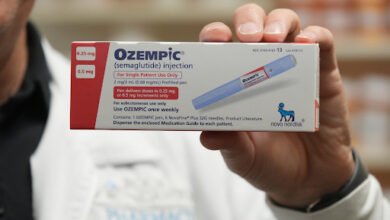What’s in the Works for Women’s Health?

Women represent half the earth’s population, but scientific knowledge about women’s health overall is lacking. Why? Historically, most clinical research was conducted on men. That means there are real gaps in understanding women’s health needs and how women respond to treatments.
But we do know that women are more likely than men to experience these conditions:
- Autoimmune diseases, such as lupus
- Mental health conditions such as depression
- Musculoskeletal disorders such as fibromyalgia and osteoporosis
- Neurologic conditions such as Alzheimer’s disease
Overall, almost 4 out of 10 women have a chronic disease, compared to 3 out of 10 men. And more drug manufacturers are striving to develop treatments specifically for women to address a range of conditions.
According to the Pharmaceutical Research and Manufacturers of America (PhRMA) “Medicines in Development 2022 Report,” 625 medicines — either in clinical trials or under FDA review — target diseases that disproportionately or solely affect women. (For comparison, 800 drugs are in development for chronic diseases overall.)
Not every drug in development will become available for patients. Just about 12% of drugs get all the way through the process. But the drug pipeline for women’s health offers a lot of promise — and millions of women could benefit from these advances.
Among the women’s health-related drugs in development are:
- 200 drugs targeting cancers that primarily affect women, including breast, ovarian, uterine and cervical cancer
- 133 drugs for neurologic disorders, including Alzheimer’s disease, migraine disease and multiple sclerosis, all of which affect women more than men
- 87 drugs for autoimmune conditions, including lupus, myasthenia gravis and scleroderma
Treatments for postpartum depression, endometriosis, rheumatoid arthritis and triple negative breast cancer (TNBC) are also in development.
Building on progress
Over the years, technological and medical advancements have been instrumental in providing treatments and vaccines for women. For example:
- Breast cancer deaths fell 42% between 1989 and 2019 due to better screening and treatment options.
- Human papillomavirus (HPV) vaccinations reduced the number of HPV infections in teenage girls and young adult women by 86% and 71%, respectively. HPV is the virus that can cause cervical cancer, so fewer HPV infections means lower rates of cervical cancer.
More than 11% of American women have endometriosis, a painful condition that causes tissue growth outside the uterus. The first oral medicine for endometriosis was approved in 2018
.
Medical advances can improve health equity
Not only has women’s health been less understood than men’s, but gender bias often leads to misdiagnosis and delays in treatment. Women’s health research and drug development can help raise awareness about women’s unique health needs and ultimately improve gender equity in health and medicine. More than that, new treatments could also improve health equity along racial and ethnic lines.
One example: Hispanic women are 40% more likely to be diagnosed with cervical cancer and 20% more likely to die from it than other women. And research shows that Black women are more than twice as likely to die from complications of pregnancy or childbirth than white women.
Including a more diverse range of women in clinical trials will help scientists learn more about how women of color are affected by diseases. That understanding will pave the way for better treatments, tailored more specifically to health needs in different communities.
The development of new treatments has the potential to save more lives and to make health care more equitable. Research on women’s health still has a long way to go, but every advancement is one step closer to better healthcare overall.
This resource was created with support from PhRMA.
Source link
#Whats #Works #Womens #Health



